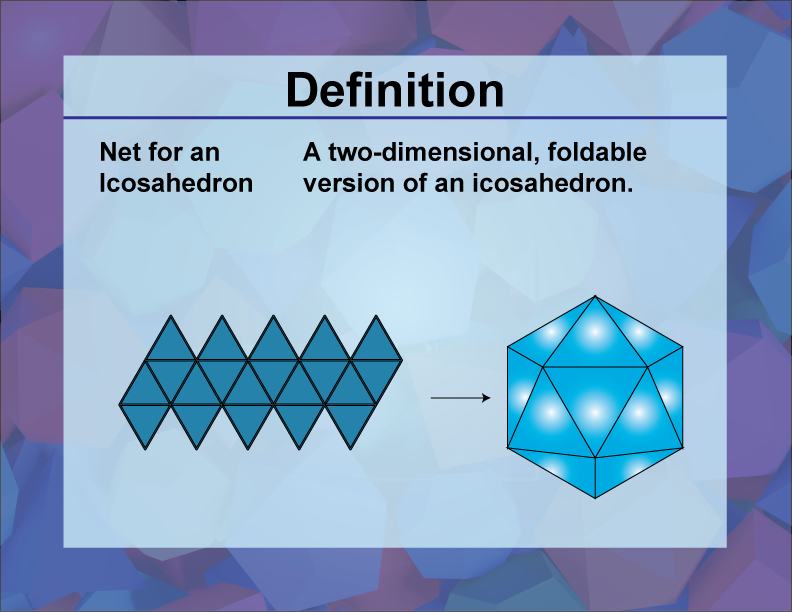
Display Title
Definition | 3D Geometry Concepts | Net for an Icosahedron
Display Title
Net for an Icosahedron

Topic
3D Geometry
Definition
A net for an icosahedron is a two-dimensional flat pattern that, when folded along its edges, forms the surface of a three-dimensional icosahedron.
Description
The net for an icosahedron is a crucial concept in three-dimensional geometry, particularly in the study of polyhedra. An icosahedron is a regular polyhedron with 20 faces, each of which is an equilateral triangle. The net provides a visual representation of how these 20 triangular faces are connected and arranged in a flat pattern that can be folded to create the three-dimensional shape.
Understanding nets is essential for visualizing and constructing complex 3D shapes. In the case of an icosahedron, the net typically consists of 20 equilateral triangles arranged in a specific pattern that allows for proper folding and assembly. This concept helps students and professionals alike to better comprehend the relationships between two-dimensional and three-dimensional representations of geometric figures.
The study of nets, including that of an icosahedron, has practical applications in various fields such as packaging design, architecture, and computer graphics. It also plays a significant role in mathematical education, helping to develop spatial reasoning skills and geometric intuition. By exploring nets, learners can gain insights into properties of polyhedra, such as surface area calculations and the principles of symmetry in three-dimensional objects.
For a complete collection of terms related to 3D geometry click on this link: 3D Collection.
| Common Core Standards | CCSS.MATH.CONTENT.5.MD.C.3 |
|---|---|
| Grade Range | 4 - 6 |
| Curriculum Nodes |
Geometry • 3D Geometry • 3-Dimensional Figures |
| Copyright Year | 2021 |
| Keywords | three-dimensional geometry, 3d Geometry, defnitions, glossary term |